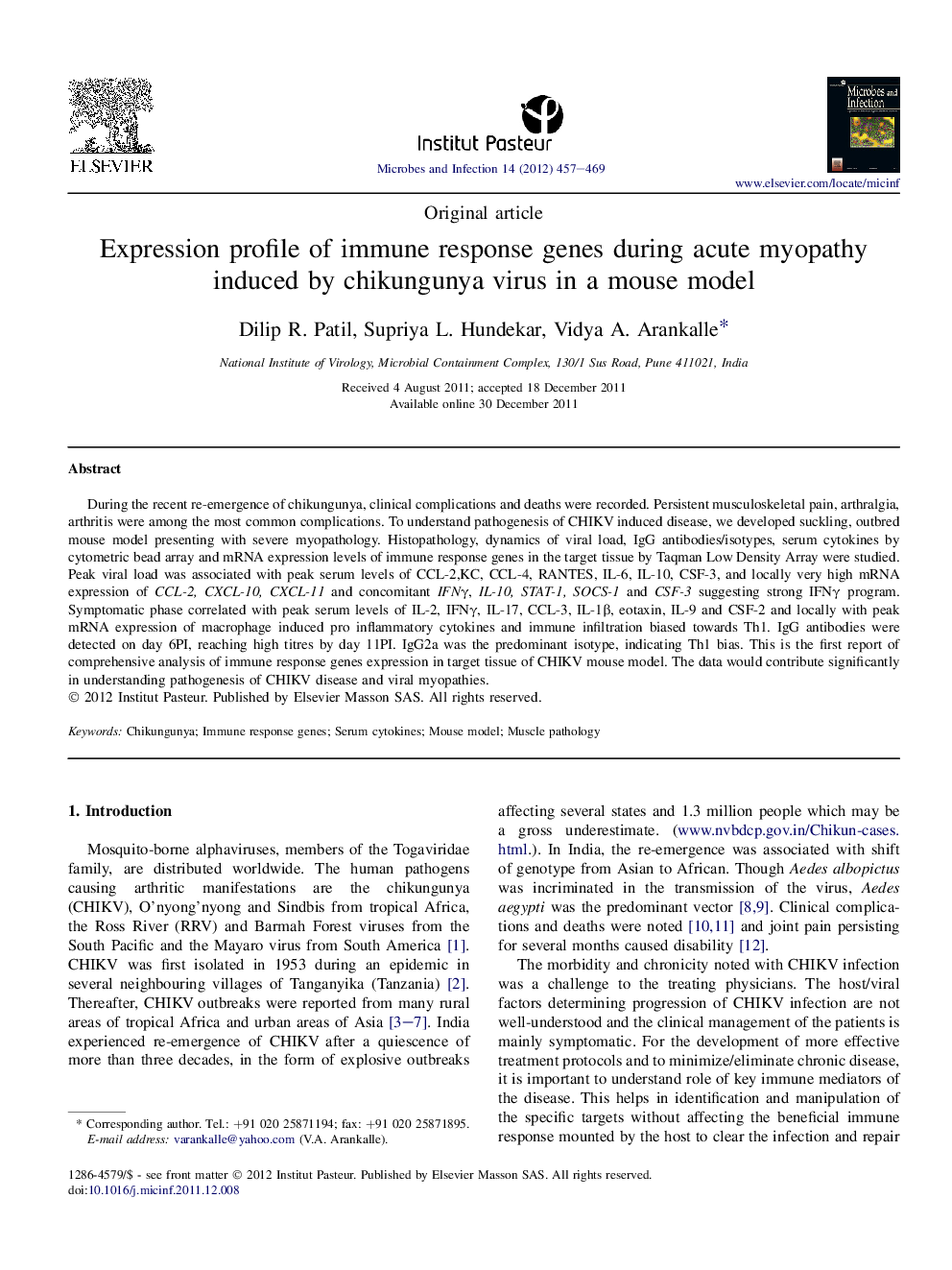| Article ID | Journal | Published Year | Pages | File Type |
|---|---|---|---|---|
| 3415029 | Microbes and Infection | 2012 | 13 Pages |
During the recent re-emergence of chikungunya, clinical complications and deaths were recorded. Persistent musculoskeletal pain, arthralgia, arthritis were among the most common complications. To understand pathogenesis of CHIKV induced disease, we developed suckling, outbred mouse model presenting with severe myopathology. Histopathology, dynamics of viral load, IgG antibodies/isotypes, serum cytokines by cytometric bead array and mRNA expression levels of immune response genes in the target tissue by Taqman Low Density Array were studied. Peak viral load was associated with peak serum levels of CCL-2,KC, CCL-4, RANTES, IL-6, IL-10, CSF-3, and locally very high mRNA expression of CCL-2, CXCL-10, CXCL-11 and concomitant IFNγ, IL-10, STAT-1, SOCS-1 and CSF-3 suggesting strong IFNγ program. Symptomatic phase correlated with peak serum levels of IL-2, IFNγ, IL-17, CCL-3, IL-1β, eotaxin, IL-9 and CSF-2 and locally with peak mRNA expression of macrophage induced pro inflammatory cytokines and immune infiltration biased towards Th1. IgG antibodies were detected on day 6PI, reaching high titres by day 11PI. IgG2a was the predominant isotype, indicating Th1 bias. This is the first report of comprehensive analysis of immune response genes expression in target tissue of CHIKV mouse model. The data would contribute significantly in understanding pathogenesis of CHIKV disease and viral myopathies.
